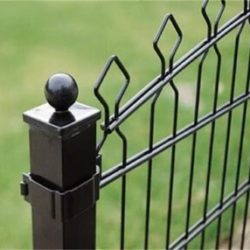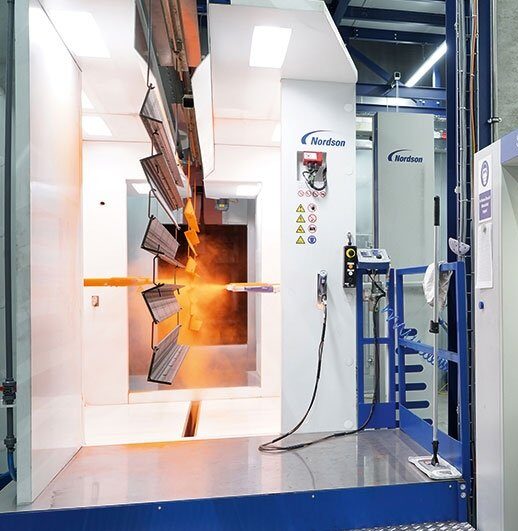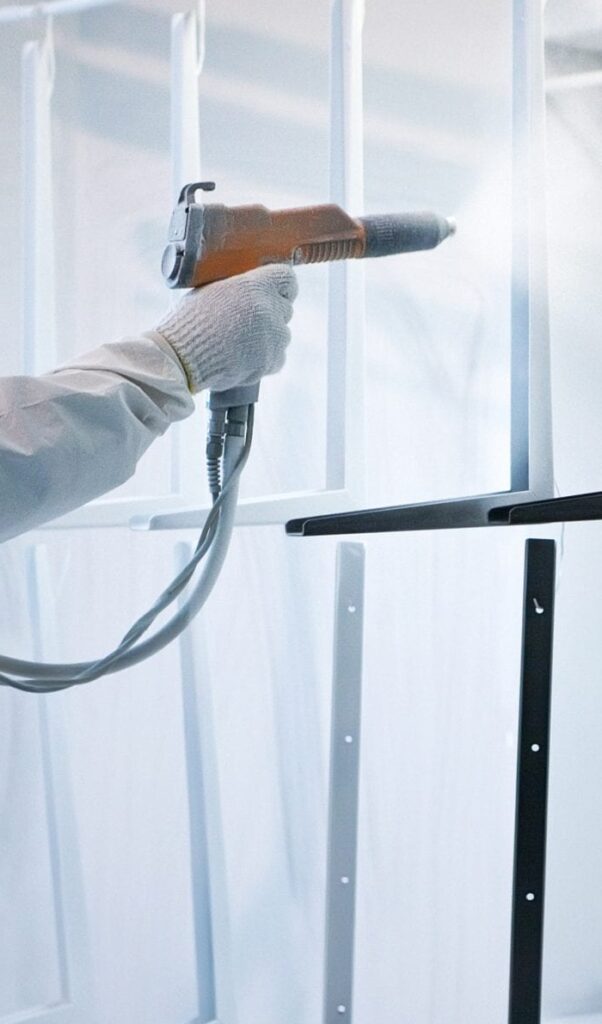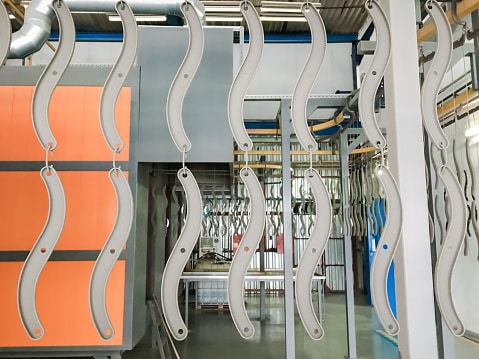
Powder coating is the best and most popular way not only to change the look of an old fence or fence but also to improve its reliability, durability, and quality. Powder coating is recommended for all types of metal fences as it provides an anti-corrosion barrier and protection against weather conditions and mechanical damage. It doesn’t take long to convince anyone about the advantages of this type of machining, so let’s move on to the details. In today’s article, we have included everything you need to know before powder coating your fence.
Powder coating of the fence from the execution side?
If you plan to paint the fence yourself, you need to prepare for it both in terms of content and equipment. A complete powder coating set should consist of a painting unit, a furnace which heats up to a temperature of at least 140 degrees Celsius, and a powder coating booth. If you want to learn more about the above-mentioned elements, please read this article.
In addition to the painting set, you will also need tools to properly prepare the surface for painting, because it is as important as spraying the paint. To do this, you need to have the right grinding, polishing, and cleaning equipment and find the right place for the job. The key issues, in this case, are good lighting, the possibility of dusting off the filings formed during the preparation stage, and appropriate ventilation and exhaust system.
Powder coating of the fence: step-by-step instruction

Step 1: Prepare the surface
In a powder coating process, surface preparation is an issue as well, if not more important than the coating itself. By surface preparation, we mean primarily
- cleaning the fence of dirt.
- Degreasing the fence surface,
- Getting rid of the old paint coating—grinding, sandblasting, polishing—getting
- rid of any traces of corrosion.
How to do it? It all depends on what equipment you have. If you have a specialised sandblaster, the whole process will be much faster and more pleasant for you—all you need to do is use the equipment on the entire surface of the fence and thus get rid of all dirt and damage. If however, you do not have such tools, the process itself will take much more time, but if you are accurate, you can get the right surface. And this is the most important thing in this case because it is reflected in the uniformity and strength of the powder coating.

Step 2: Powder coating
Once you have properly cleaned and sanded the surface of the fence, it’s time to move on to the next stage, which is powder coating. This is done with a special applicator, often referred to as a powder coating gun. There are two basic types of this device, namely the tribe applicators and the crown. In short, crown-type guns are most commonly used for metal materials, while Tribo application equipment allows for easier coating of many complex and irregularly shaped components. You can find out more about their specifics by clicking here.

Step 3: Melting the powder paint
If your fence is properly coated with powder paint, it is high time to finish this tedious project. To do this, it is necessary to heat the painted coating to a temperature between 140 and 200 degrees Celsius. The powder melts, which leads to the formation of a uniform coating on the painted element. This can be done in any furnace that has the function of heating to these temperatures and is large enough to accommodate the relevant parts of the fence or fence.
